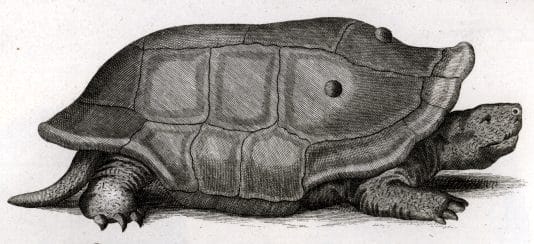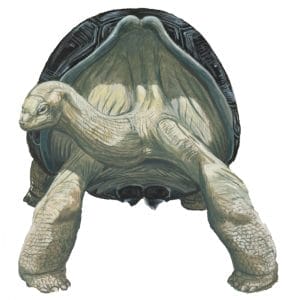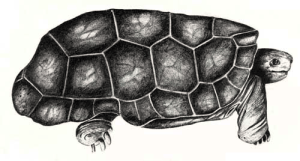Cylindraspis indica (Reunion Giant Tortoise)
Home > Turtle Database > Cylindraspis indica (Reunion Giant Tortoise)
Cylindraspis indica was a large, now-extinct species of tortoise that once inhabited the Mascarene Islands, particularly Réunion. Known for its distinctive shell shape and massive size, this tortoise species disappeared due to overexploitation and habitat destruction during the 18th century.
Native To These Regions
Réunion (France)Native Turtle Species Map – Find Turtles by Region
Scientific Classification
- Kingdom: Animalia
- Phylum: Chordata
- Class: Reptilia
- Order: Testudines
- Family: Testudinidae
- Genus: Cylindraspis
- Species: Cylindraspis indica
Common Names
- Réunion Giant Tortoise
This Hilarious Turtle Book Might Know Your Pet Better Than You Do
Let’s be real—most turtle care guides feel like reading a textbook written by a sleep-deprived zookeeper.
This one’s not that.
Told from the snarky point of view of a grumpy, judgmental turtle, 21 Turtle Truths You’ll Never Read in a Care Guide is packed with sarcasm, sass, and surprisingly useful insights.
And hey—you don’t have to commit to the whole thing just yet.
Grab 2 free truths from the ebook and get a taste of what your turtle really thinks about your setup, your food choices, and that weird plastic palm tree.
It’s funny, it’s honest, and if you’ve ever owned a turtle who glares at you like you’re the problem—you’ll feel seen.
Identification
- Description: Cylindraspis indica had a highly domed carapace with a relatively long neck, allowing it to reach vegetation at various heights. The carapace could grow over 1 meter in length, and the tortoise itself was massive in size, resembling other giant tortoises in shape and posture.
- Sexual Dimorphism: Males were generally larger than females, with slightly longer tails and a more concave plastron to aid in mating.
Check more turtles from the Cylindraspis genus
Native Origin and Distribution
- Geographical Range: This species was endemic to the island of Réunion in the Indian Ocean, part of the Mascarene archipelago.
Preferred Habitat
Cylindraspis indica primarily inhabited the open woodlands, grasslands, and coastal areas of Réunion. It thrived in areas with abundant vegetation, which provided both food and shelter.
Behavior
- Feeding Habits: It was an herbivore, feeding mainly on grasses, shrubs, and low-lying vegetation. It may have also consumed fruits and fallen leaves.
- Predators: As an adult, it had no natural predators. However, humans were the primary threat, exploiting the species for food.
Reproduction
- Breeding Season: Little is known about the exact breeding season, but like other tortoises, it is believed to have bred during the warmer months.
- Reproductive Method: The females likely laid eggs in nests dug into sandy or soft soil. Hatchlings were vulnerable to predation by introduced species like rats.
Conservation
- Extinction Status: Extinct. The last recorded individual was seen in the 18th century.
- Threats: Overhunting by humans for food and habitat destruction due to settlement were the primary causes of its extinction. Introduced animals such as rats and pigs also preyed on eggs and young tortoises.
- Conservation Measures: No conservation measures were put in place during its time as it became extinct before modern conservation efforts began.
Economic Importance
The species was exploited for food by sailors and settlers on Réunion, who found the tortoise meat to be a reliable source of nutrition during long voyages.
Interesting Facts
- Cylindraspis indica was one of five giant tortoise species in the Mascarene Islands, all of which are now extinct.
- These tortoises played a crucial role in their ecosystem by aiding seed dispersal and maintaining vegetation through grazing.

About Author
Muntaseer Rahman started keeping pet turtles back in 2013. He also owns the largest Turtle & Tortoise Facebook community in Bangladesh. These days he is mostly active on Facebook.















